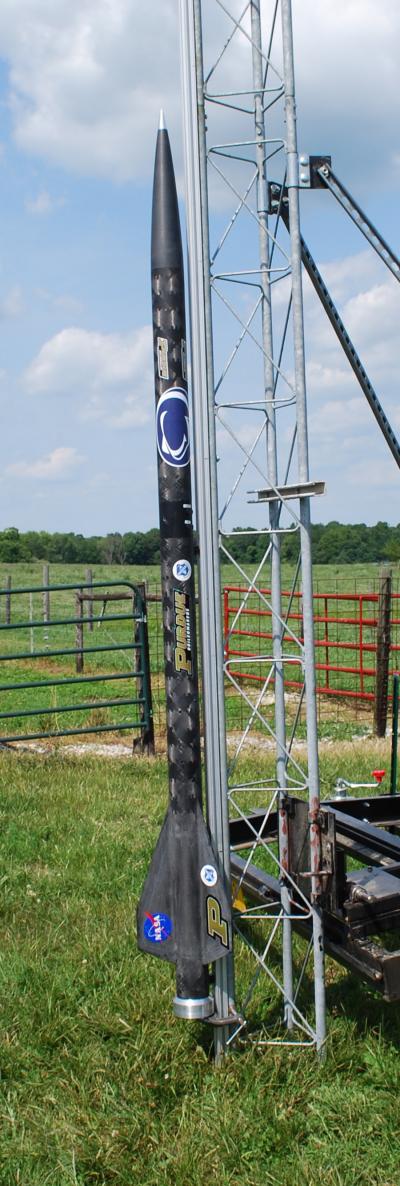Would you like to make your own black hole before the LHC supposedly dooms us all (though it has to stop breaking first before it can unleash physics-induced Eschaton)?
Dartmouth researchers say they may be able to do it.
Writing in Physical Review Letters, they propose a new way of creating reproduction black holes in the laboratory on a much-tinier scale than their science-fiction staples.
The new method, if it works, would create tiny quantum-sized black hole and allow researchers to better understand what physicist Stephen Hawking proposed more than 35 years ago; that black holes are not totally void of activity, they emit photons, what is now called Hawking radiation.
On the big list of environmental challenges we face, you might worry about volcanic ash or industrial soot or farting cows ... some people are even concerned by an obscure greenhouse gas named carbon dioxide. But you probably aren't concerned about the global impact of those rare rocket launches.
Going green is big, though, so efforts to make green rocket propellant are getting funding. Thus, NASA and the Air Force Office of Scientific Research are pleased to accounce they have successfully launched a small rocket using an environmentally-friendly, safe propellant comprised of aluminum powder and water ice, called ALICE.
Researchers at the University of Iowa and Kansas State University say a deafness-causing gene defect in mice helped identify a new protein that protects sensory cells in the ear, according to findings in PLoS Genetics.
In humans, hereditary deafness is one of the most common birth defects, yet most genes involved in hearing are unidentified. Mice are used as research models because mouse and human auditory genetics are very similar.
Using a deaf mouse model generated at The Jackson Laboratory, the team identified the deafness-causing defect in the claudin-9 gene. The mutated gene fails to produce normal claudin-9 protein, which, the UI team showed, is needed to maintain the proper distribution of potassium in the inner ear.
We humans spend roughly one-third of our lives asleep but researchers don't know why.
Science magazine listed the function of sleep is one of the 125 greatest unsolved mysteries in science and we've seen theories range from brain 'maintenance', including
memory consolidation and pruning, to
reversing damage from oxidative stress suffered while awake, to promoting longevity. None of these theories are well established, and many are mutually exclusive.
Next year begins one of the largest and most important scientific experiments in history; the initial attempts at the
National Ignition Facility (NIF) to produce the world's first controlled nuclear fusion reaction and tame the energy source of the sun.
That would mean a limitless new source of energy for homes, factories, and businesses.
Premier League clubs who have long-term managers are more successful than those who change their managers on a frequent basis, say business school researchers.
Because there's nothing sports clubs want more than advice from academics who examine past trends and draw conclusions based on the fact that elite clubs fire people less.
 Study: Caloric Restriction In Humans And Aging
Study: Caloric Restriction In Humans And Aging Science Podcast Or Perish?
Science Podcast Or Perish? Type 2 Diabetes Medication Tirzepatide May Help Obese Type 1 Diabetics Also
Type 2 Diabetes Medication Tirzepatide May Help Obese Type 1 Diabetics Also Life May Be Found In Sea Spray Of Moons Orbiting Saturn Or Jupiter Next Year
Life May Be Found In Sea Spray Of Moons Orbiting Saturn Or Jupiter Next Year









